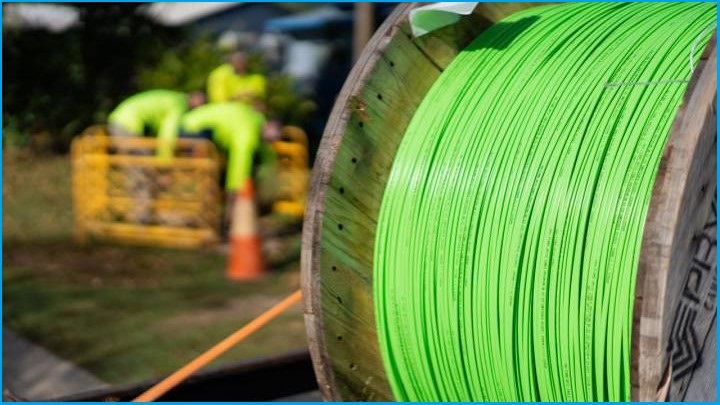More than 1,000 traffic lights in New South Wales will be upgraded to use optical fibre instead of ageing copper-based ADSL, as part of a $15 million plan to modernise the state’s traffic infrastructure.
The NSW government and its project partners said the changes would modernise and future-proof the state’s traffic network, improve road monitoring and traffic data, reduce traffic light downtime and allow for future connectivity with our increasingly connected vehicles.
Around 1,300 traffic light controllers and nearly 700 roadside CCTV cameras across Greater Sydney, Wollongong, Newcastle and some regional centres will be upgraded to high bandwidth fibre over the next 18 months, the state government said.
The upgrades are expected to provide future opportunities for automated vehicles, smart sensors and AI systems to improve safety and efficiency on the state’s roads in the coming years.
The project is part of a multi-year program to prepare NSW for old technology being phased out, including copper networks and the 3G mobile network.
Telstra is expected to shut down its 3G network on 1 September, followed shortly after by Optus, while Vodafone and its parent company TPG have already shut down their 3G networks.
Transport for NSW Executive Director of Intelligent Transport Systems, John Paul Ahern, said fibre upgrades on the traffic network probably wouldn't be noticed by drivers, but the public would still benefit.
“Improvements to the speed and reliability of connections to these critical assets will reduce faults and downtime while boosting the efficiency of our intelligent transport system,” he said.
“The other exciting benefit is that this fibre opens up options for where we can expand smart traffic systems and motorway capabilities: we are no longer reliant on where the NBN already exists, we can use the fibre to bridge that gap.”
Ahern said Transport NSW had previously been unable to connect NBN fibre to important locations which weren’t homes or workplaces.
But the department is now using NBN’s Smart Places technology, in which a small modem is used to allow fibre to connect to existing infrastructure, independent of nearby buildings.

An NBN Smart Places termination device. Photo: NBN
Steve O’Rourke, NBN general manager for business products, said the NSW upgrades — the largest rollout of Smart Places to date — marked “a significant milestone” which would showcase how the technology can “enable innovation, data and insights to provide benefits to our communities”.
Western Australia and South Australia have previously implemented Smart Places at smaller scales.
Contracts to supply and implement the NBN Smart Places fibre and services on NSW roads have been awarded to TPG and Vocus.
Rapid rise predicted for outdoor fibre
Research commissioned by NBN and published by International Data Corporation (IDC) in November 2023 predicted the number of outdoor fibre connections in Australia would increase by almost 350 per cent in just seven years.
The report found an estimated 71,000 NBN outdoor connections would likely grow to more than 319,000 by the end of the decade, with the data traffic they carry rising from 81 Gbps to 1,450 Gbps (1.45 terabytes per second).

The number of outdoor fibre connections in Australia is expected to rapidly rise. Photo: NBN
The research suggested there would still be challenges for the NBN’s ongoing network expansion, including the increasing popularity of 4G, 5G and satellite connectivity.
However, it also pointed to fibre’s lower latency and scalable bandwidth as key benefits, and suggested its leading use cases were in infrastructure for so-called Smart Cities, the creation of new housing developments, and by utilities, transport, construction, media and retail businesses.
Ahern said the NSW traffic network needed the reliability of fibre to meet its future transport technology needs.
“These needs will exponentially increase in the coming years as we see a rise in communication between connected automated traffic systems and vehicles, so we needed a solution that would serve us for decades to come,” he said
Fibre optic connections are expected to be added more widely to transport networks in other Australian jurisdictions in the coming years.










